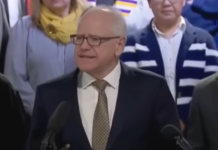The assassination of President John F. Kennedy on November 22, 1963, remains one of the most tragic and controversial events in American history. Even after six decades, the conspiracy theories surrounding his death continue to captivate the public’s imagination. Former Secret Service Agent Clint Hill, who played a pivotal role in the events of that fateful day, has recently released a commemorative edition of his bestselling book, “Five Days in November.” In this article, we delve into the factual documentation provided by Hill to shed light on the truth behind JFK’s assassination and debunk the persistent conspiracy theories that have plagued this historical event.
The Man Behind the Scenes
Clint Hill’s connection to the Kennedy family began in 1960 when he was assigned to first lady Jackie Kennedy’s detail. As an integral member of the Secret Service, Hill accompanied the Kennedys to Dallas on that ill-fated day. Positioned in the motorcade, just one car behind the president, Hill witnessed the events unfold with a front-row seat.
Unmasking the Assassination
As the motorcade made its way through the streets of Dallas, Hill heard a sudden explosive noise from his right shoulder. In that split second, chaos erupted. President Kennedy, clutching his throat, fell to his left. Hill’s instinct to protect the president and Mrs. Kennedy kicked in immediately.
Hill, driven by a sense of duty and desperation, jumped off his car and sprinted towards the president. However, before he could reach Kennedy’s side, a third shot pierced the air, striking the president’s head. The motorcade raced to Parkland Hospital in a desperate bid to save the president’s life. Hill’s heroic act of jumping onto the back of the presidential vehicle, just as Jackie Kennedy crawled towards him, became an iconic moment captured in the Zapruder film.
The Lone Shooter Theory
Clint Hill firmly supports the conclusion reached by the Warren Commission – that Lee Harvey Oswald acted alone. Despite the numerous conspiracy theories that have emerged over the years, Hill remains steadfast in his belief that there was only one man, one gun, and three shots that fateful day in Dallas.
Hill addresses the multitude of conspiracy theories that still persist, acknowledging that they often stem from political leanings or hearsay. These theories, he emphasizes, lack factual evidence. Hill’s firsthand account, coupled with other eyewitness testimonies, provides a comprehensive and accurate portrayal of the events surrounding the assassination.
The End of Innocence
In the aftermath of JFK’s assassination, Hill believes that the nation’s collective psyche underwent a profound transformation. The tragedy shattered people’s trust in authority, be it politicians or the news media. The “age of innocence” came to an abrupt end, leaving a lasting impact on the American consciousness.
Even after six decades, the weight of that day’s events continues to haunt Clint Hill. He admits to never finding closure and being reminded of the tragedy daily. The relentless guilt, questioning whether he could have done more, adds an emotional layer to his account.



